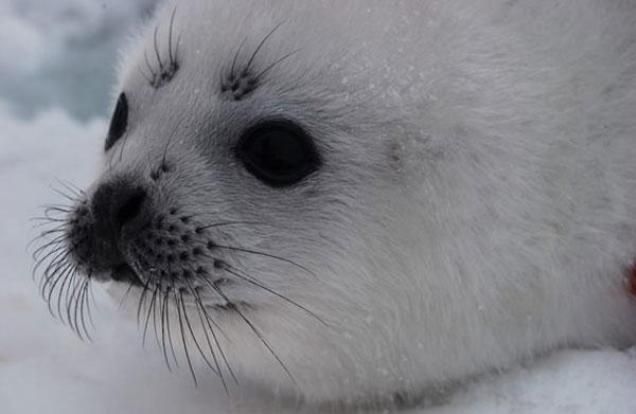Less Ice Equals More Seal Strandings on US Coast

Harp seals mate and rear their young on the sea ice off the east coast of Canada in the spring and move north as the weather warms. But increasing numbers of seals are ending up stranded along the U.S. East Coast, as far south as the Carolinas, far away from where they should be at this time of year.
As ice levels in the North Atlantic have declined, the number of seals that have wound up on beaches, either dead or in poor health, has increased, new research shows.
The study, published this month in the journal PLOS ONE, suggests that the decline of sea ice is at least partially responsible for the increase in seal strandings, said Brianne Soulen, a study co-author and biologist at the University of North Texas. Demographic factors also play a major role: A large portion of stranded seals are young, and the majority (62 percent) are male, said Soulen, who performed the research while a graduate student at Duke University. [Gallery: Seals of the World]
Stranded young males
Males may be more likely to get stranded because they tend to wander farther afield once on their own, Soulen told LiveScience.
The study was able to mostly rule out the possibility that strandings are due to inbreeding, finding that stranded seals are just as genetically diverse as non-stranded seals.
"Genetics didn't seem to have an influence," Soulen said.
Sign up for the Live Science daily newsletter now
Get the world’s most fascinating discoveries delivered straight to your inbox.
The snow-colored harp seals mate and give birth on sea ice, then mothers nurse and stay with their young. After that, the pups are on their own. The researchers hypothesize that in years with less ice, the ice that exists becomes crowded, and some seals are forced into the water before they've learned how to navigate or how and where to fish, Soulen said. This may lead them to follow groups of fish moving south, or allow them to become disoriented, she added.
Between 1991 and 2010, nearly 3,100 seals were stranded along the U.S. East Coast. Some of the seals washed ashore dead, while others, found to be sick or dehydrated, were treated and released, Soulen said. Over the past 30 years, sea ice cover in April — a prime time for seal pupping — declined by 8 percent in the Arctic, said Cecilia Bitz, a researcher at the University of Washington, who wasn't involved in the study.
Seals and other animals like polar bears that depend on sea ice to survive are threatened by the retreat of sea ice, said Peter Boveng, a marine mammal biologist at the Alaska Fisheries Science Center, who also was not involved in the study. The threat posed by the decline of sea ice in Alaska has led two species of seals, ringed and bearded seals, to be listed as threatened under the Endangered Species Act, Boveng told LiveScience.
Email Douglas Main or follow him on Twitter or Google+. Follow us @livescience, Facebook or Google+. Article originally on LiveScience.com.











